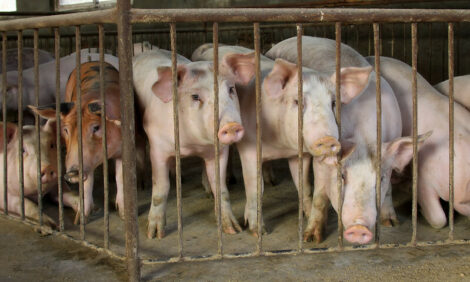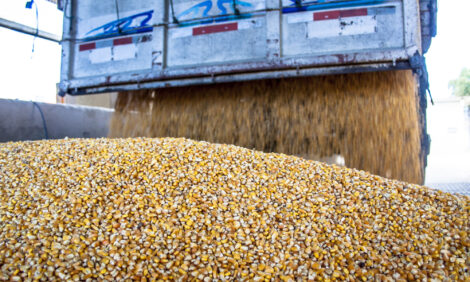



Pork’s future relies on trust throughout the pork value chain
In the end, raising hogs is about producing pork, and continuous success depends on building customers’ trust, listening to expectations and meeting their needs. As pork producers and swine veterinarians commit the bulk of their time and attention to the animals, others are charged with building the bridge between the farm and consumer. However, that’s not to say that individuals on the farm don’t play an important role.“Our customers’ view of the US pork industry is very favorable,” Jarrod Sutton, senior vice president of strategy and innovation for the National Pork Board (NPB), told Pig Health Today. “We’ve built a lot of confidence with our downstream customers because we meet and, oftentimes, exceed their expectations.”
That confidence relies on trust. And building trust throughout the pork value chain, including retailers, foodservice and consumers, requires transparency and the ability to translate technical and scientific information about on-farm production into understandable sound bites.
Sutton cited the conflict between societal expectations surrounding antibiotic use in food-animal production and the humane responsibility to treat animals in need as one such example. Compounding the challenge is that there’s no shortage of mixed messages on the topic from divergent groups.
The message that Sutton and the NPB team drives home with pork value-chain customers centers on how producers and veterinarians use antibiotics judiciously and responsibly, what they are doing to improve herd health and reduce the need for antibiotics long term, and how they are using science to move the industry forward.
“When it comes to antibiotics, we have customers across the board. Some want to completely get rid of antibiotics in their supply chain,” Sutton noted. “But the vast majority are trying to rely on science, farmers and veterinarians to learn more about antibiotic use and livestock production. And we (NPB) deliver information that our chain customers can use to respond to anyone who’s interested in learning more about antibiotic use and livestock production.”
He acknowledged that some customers’ aspirational antibiotic-free goals may be a challenge to achieve due to the volume and type of products they source. Of course, it’s ultimately about a company’s choice, and Sutton said that “the pork industry has tremendous evidence to demonstrate that we’re committed to continuous improvement and investing in science to figure out how to meet customer expectations.”
Future customer trends
It’s important to know where your customer is headed — how their behaviors and attitudes are changing. Through the Pork Checkoff, NPB commits time and money to research in order to identify current and future customer trends. Looking ahead to the next 5 or so years, Sutton said the next trend is about the intersection of health, wellness and (environmental) sustainability. “And food is right square in the middle of it,” he added.
Specifically, he pointed to Silicon Valley where people are talking about food as if it’s the new Internet. “A lot of tech and venture capitalists are investing in food, to change the food system,” Sutton said. “It’s about individualized nutrition and how to use technology to tailor the best nutritional profile for your optimal body performance.”
While that concept may seem futuristic, Sutton noted that pork, due to its strong protein profile, fits solidly into that nutritional role. “Protein is critically important to meet individual nutrition needs, and there will be higher demand for protein products like pork,” he said.
At the same time, plant-based proteins are here to stay. In truth, such products have been around since the mid-1990s. Remember the BocaBurger? Sutton worked for the company — KeHE Foods — that sold the black-bean burger. There’s long been a segment of consumers interested in plant-based proteins, but today there are more “flexitarians” entering the mix. “They haven’t excluded meat but want to add more vegetables to their diet,” Sutton said. “We believe with the growth in global population that there’s room for both. Pork can be part of that blended approach.”
Concern about the environment and perceptions about sustainability, whether right or wrong, will continue to drive consumers’ food decisions and, consequently, those of the supply-chain customers. The irony is that modern hog-confinement facilities have produced an excellent environmental story — “less than 0.5% of greenhouse gas emissions in this country comes from pork production,” Sutton noted. “And we’re rapidly heading toward carbon neutrality. That’s a tremendous story.”
Yet too often the public views confinement hog buildings as a negative for the environment as well as the animals’ welfare. But, Sutton believes, therein lies an opportunity.
This is where transparency, expanding the dialogue and building trust in conventional pork-production practices become so critical. “We have to open the doors and show people exactly what happens inside those barns,” Sutton said, “how the pigs receive optimal care and how they are behaving in those climate-controlled facilities. When we connect those dots, our favorability with people increases.”
Three key points
For today and the future, Sutton offered three key points for pork producers and swine veterinarians to consider when thinking about customers throughout the pork supply chain.
1) It’s about empathy. “Whatever people feel, it’s valid. You may not agree with it, but it sure helps when you can come from an empathetic perspective,” he said, “to start a conversation on the same side of the table.”
2) It’s about transparency. He emphasized that the pork industry is conscientious about producing a wholesome, safe, nutritious product, and more people need to know about that. Specifically, trust and confidence grow when people, such as veterinarians, talk about the good work that’s happening on farms every day, he added.
3) It’s about collaboration. Sutton said this aspect is about co-creating with retail and foodservice. “Identify what they need and expect from pork,” he noted. “Then, how do we effectively build a partnership that creates mutually beneficial solutions so that all partners in the pork value chain can benefit?
“Those are the key points that I think will help us grow together looking forward,” he concluded.






